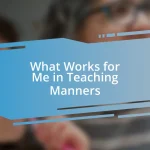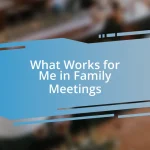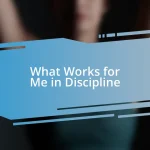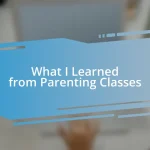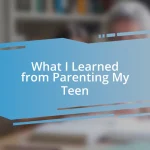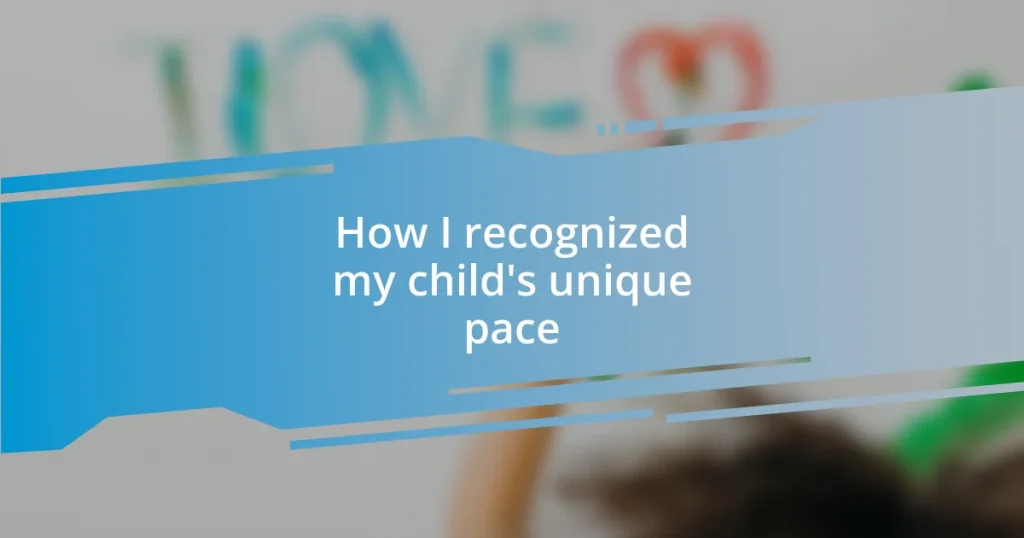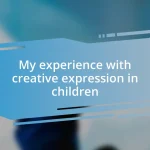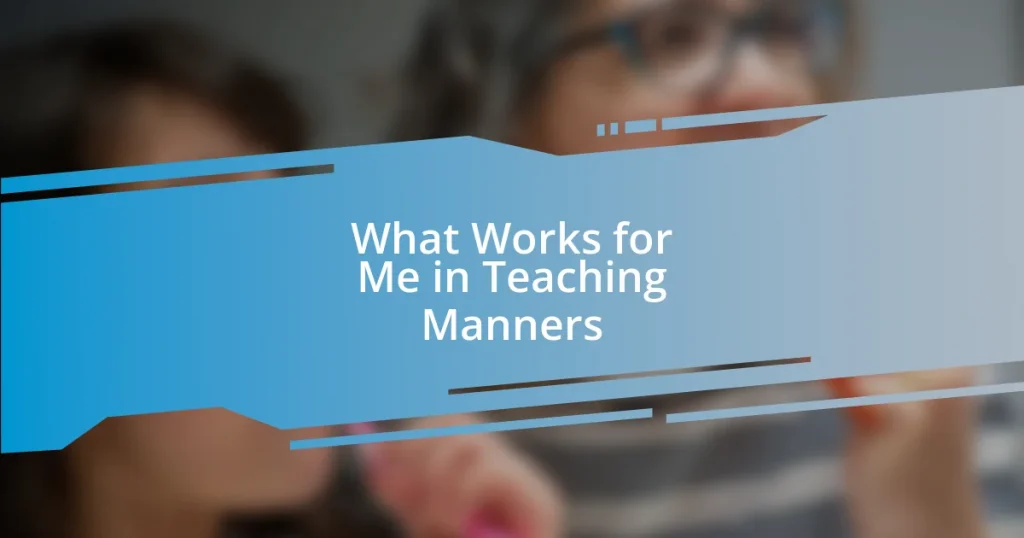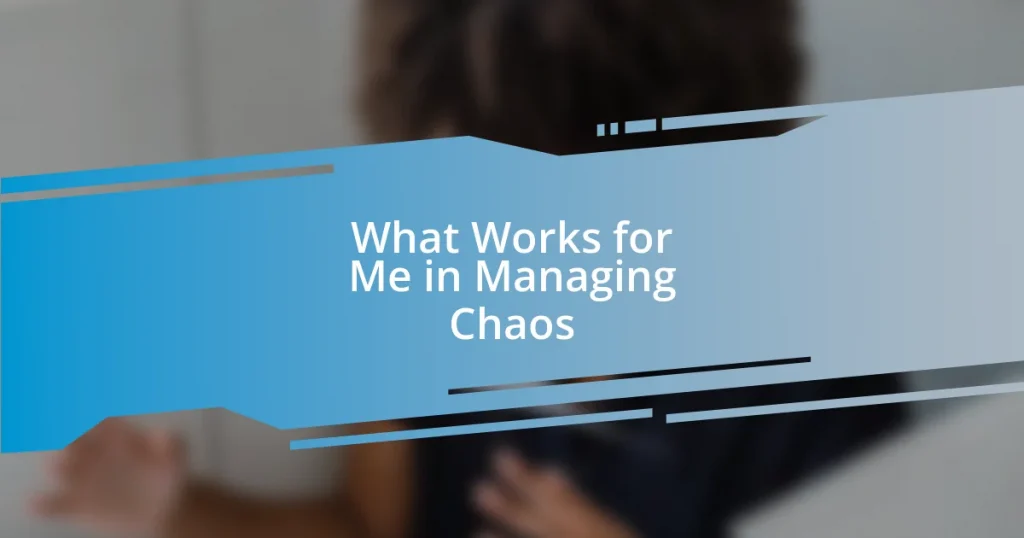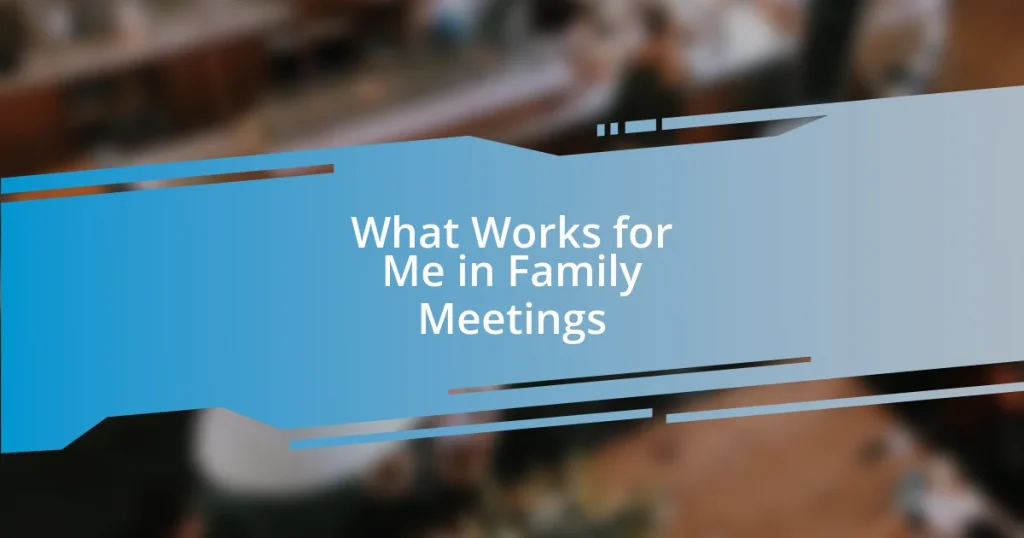Key takeaways:
- Understanding child development stages is essential to recognizing each child’s unique pace and interrelated growth in cognitive, emotional, and physical aspects.
- Creating a personalized learning environment that is comfortable, flexible, and choice-oriented fosters a child’s natural curiosity and love for learning.
- Collaborating with educators and adapting activities based on a child’s reactions promotes a supportive learning experience tailored to their individual needs.
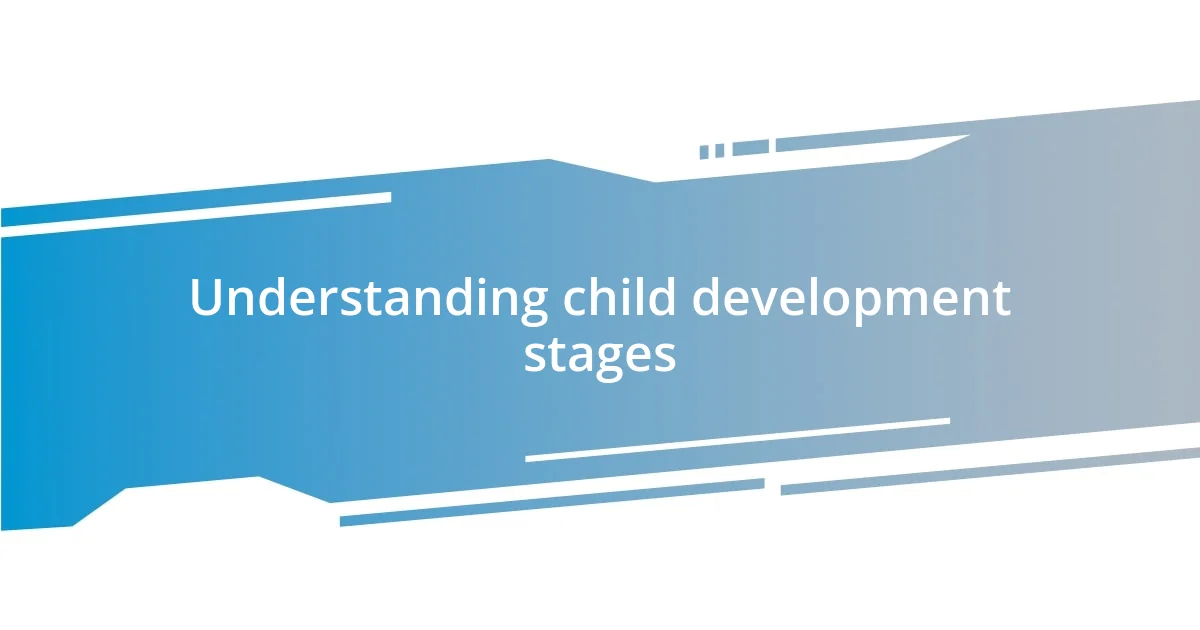
Understanding child development stages
Understanding child development stages is crucial for recognizing and appreciating each child’s unique pace. I remember when my child, at the age of three, suddenly started forming complex sentences. I felt a mix of pride and surprise—was it normal for a toddler to jump from simple words to intricate expressions so quickly? This reflection pushed me to delve deeper into developmental milestones.
As I learned more, I realized that stages such as the cognitive, emotional, and physical development are all interrelated. My experience showed me that no two children will follow the same path; some may excel in verbal skills while others shine in motor skills at different rates. Have you ever noticed a friend’s child who seems to be ahead or behind but still thriving in their own way? It’s a reminder that development is not a race.
The emotional aspect of observing these stages cannot be overlooked either. As I navigated through moments of frustration and joy—like when my child mastered stacking blocks at a mere five months—I grasped how crucial it is to celebrate these small victories. Each milestone is a building block in a child’s life, reinforcing the importance of understanding their individual journey, rather than fitting them into a predetermined mold.

Observing my child’s behavior
As I watched my child during playtime, I noticed how she engaged deeply with different types of toys. While some children raced through activities, my daughter would linger over puzzles, savoring each piece as if it were a treasure. It struck me how her focus wasn’t just a quirk; it was a reflection of her unique pacing and intrinsic curiosity about the world around her.
There was a day when her little hands meticulously arranged her crayons by color for what felt like an eternity. Instead of rushing to ‘get it done’, she took her time, creating a vibrant spectrum across the table. This taught me the importance of observing not just the end results, but the process and enjoyment behind every task they undertake. Each moment spent appreciating her unique approach filled my heart with warmth.
In conversations with friends, I learned their children often approached learning differently—some would talk incessantly while others were quiet observers. This variety highlighted an essential truth: every child has their rhythm, a personal signature in how they navigate tasks and interactions. Recognizing these nuances in behavior has deepened my understanding and appreciation for my daughter’s individual path.
| Type of Behavior | My Child’s Reaction |
|---|---|
| Engagement with toys | Lingered over puzzles, showing deep focus |
| Arranging crayons | Took time to savor the color spectrum |
| Interacting with peers | Quiet observer, contrasted with more vocal children |
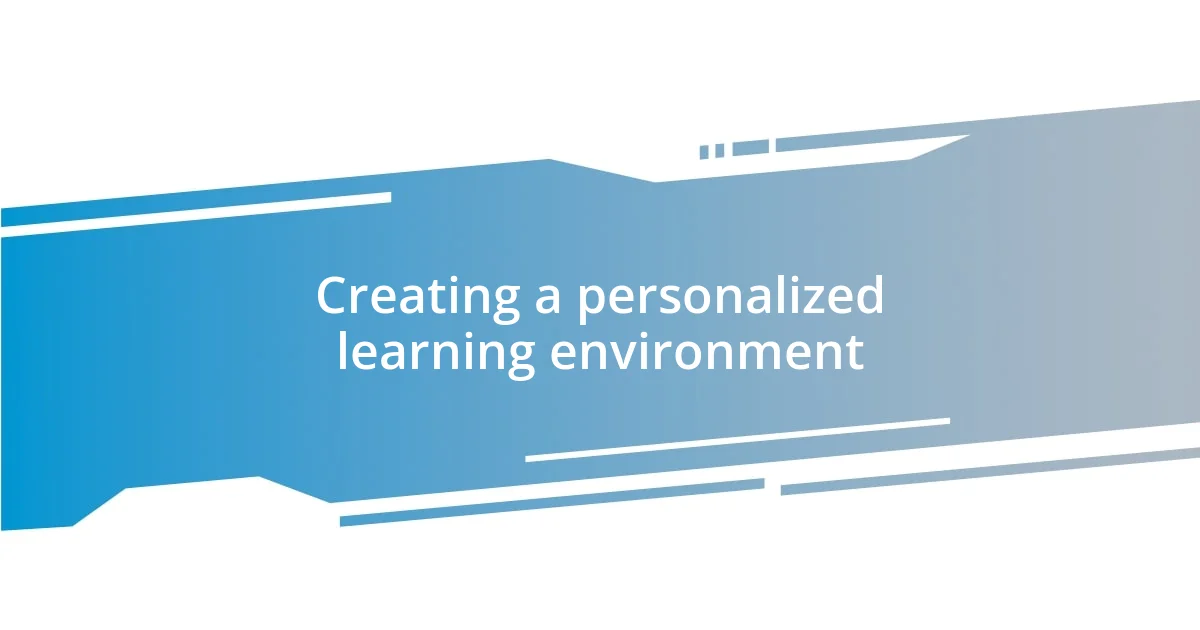
Creating a personalized learning environment
Creating a personalized learning environment truly emphasizes the importance of tailoring education to fit a child’s unique pace. One afternoon, I transformed a small corner of our living room into a cozy learning nook, complete with colorful cushions and books that spark my child’s interest. I noticed how, instead of feeling overwhelmed by a traditional setup, she thrived in a space that felt inviting and safe. This realization reinforced how crucial it is to adapt surroundings to include what excites and motivates her.
To further enhance this personalized space, I focused on these key elements:
– Comfort: Ensuring the area feels safe and welcoming for exploration.
– Choice: Offering a variety of materials that align with their interests, from art supplies to books on space.
– Flexibility: Allowing the space to adapt daily based on what captures her imagination that day.
– Involvement: Engaging her in decision-making, like choosing decorations or the day’s focus, fosters ownership in her learning process.
– Routine: Establishing a rhythm that incorporates her natural flow, allowing for breaks when needed without pressure.
I’ve been amazed at the difference these small adjustments have made. Each time she loses herself in a project or dives into a book, I realize just how essential it is to honor her pace, creating an environment where curiosity can flourish without constraints.
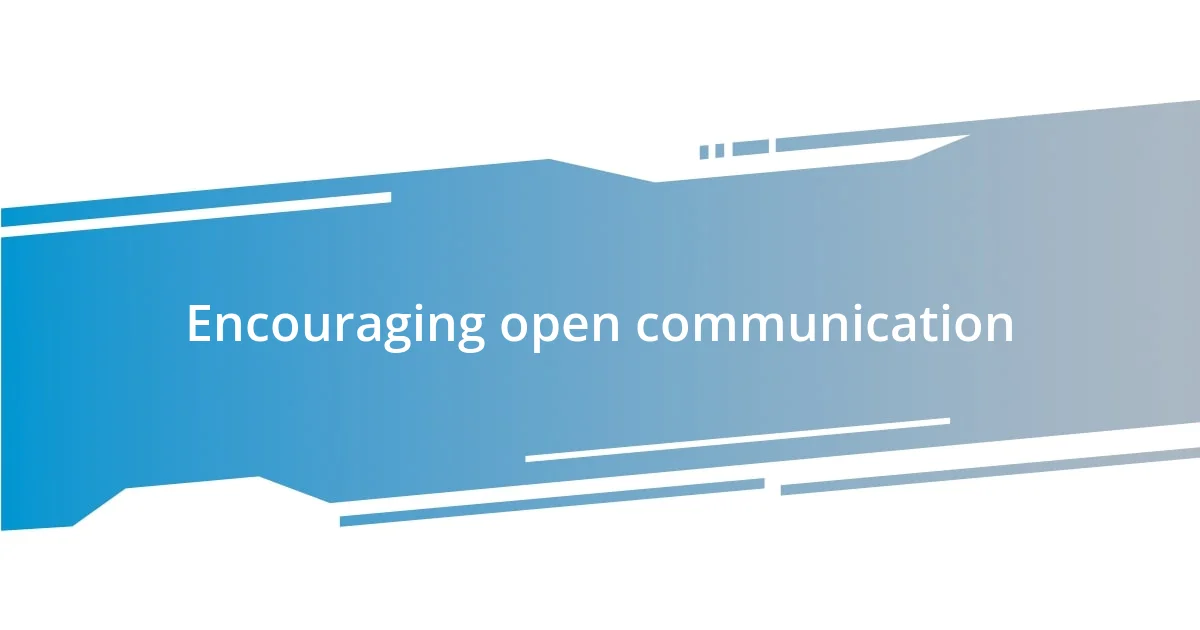
Encouraging open communication
Communicating openly with my child has been an enlightening journey. I remember sitting across from her during a quiet afternoon, curious about what was on her mind. I took a deep breath and asked her, “What do you love most about your puzzles?” Watching her eyes light up as she described the colors and shapes immersed me in her world. This moment reinforced how essential it is to create a safe space for her to express her thoughts freely.
I’ve learned that open communication can be a spontaneous adventure. A simple question during our walks, like “Which animal do you want to learn about today?” invited my daughter to share her interests. It not only opened the door for dialogue but also revealed the depth of her curiosity. It was in these conversations that I discovered her slower pace in processing thoughts allowed her to form deeper connections with the subjects she loved.
Sometimes, I find it challenging to keep the conversation flowing, especially when she seems lost in her thoughts. But I realized that pausing and giving her the time to explore her feelings leads to the most meaningful exchanges. I often ask, “What do you feel when you finish a puzzle?” This way, I encourage her to dive into her emotions. It’s incredible how these little moments of curiosity have strengthened our bond and made learning feel like a joint adventure rather than a race against time.
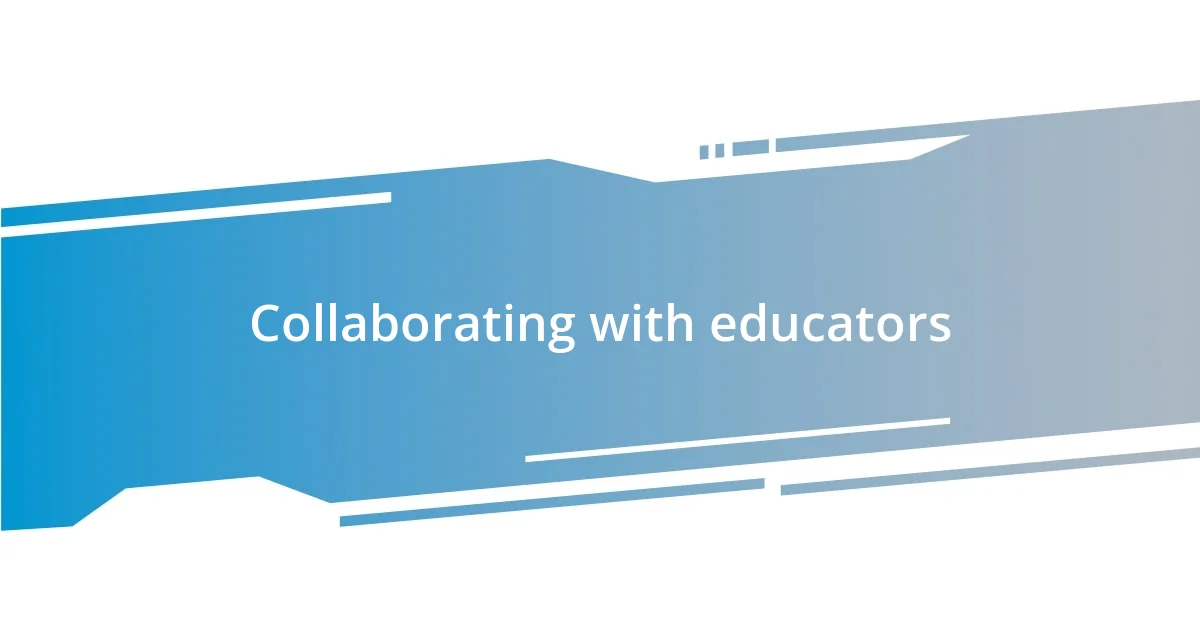
Collaborating with educators
Collaborating with educators feels like teaming up in a shared goal – fostering my child’s unique learning style. I vividly remember attending a parent-teacher conference where I was eager to share my observations about her learning pace. The teacher and I exchanged insights, and to my delight, she was open to adapting her approach. This conversation solidified my belief that educators thrive on collaboration; it’s about pooling knowledge to create the best possible experience for our children.
During our discussions, I emphasized the importance of personalized feedback. I shared my daughter’s interests in storytelling and artistic expression, which prompted her teacher to incorporate those elements into lessons. It was heartwarming to see how this partnership evolved. I watched my daughter’s confidence blossom as she felt seen and understood in the classroom. Have you ever experienced that moment when it clicks? When your child finally feels comfortable being themselves in an academic setting? It makes all the difference.
Furthermore, I understood that collaboration doesn’t end after a meeting. Regular check-ins with her teacher became a priority. I reach out via email to share updates on her progress or any concerns, which keeps the line of communication open. It’s incredible how these small acts foster relationships and build a supportive network around my child. Collaborating with educators isn’t just about sharing information; it’s about creating a shared vision for success, one where both sides are equally invested in nurturing my child’s growth.
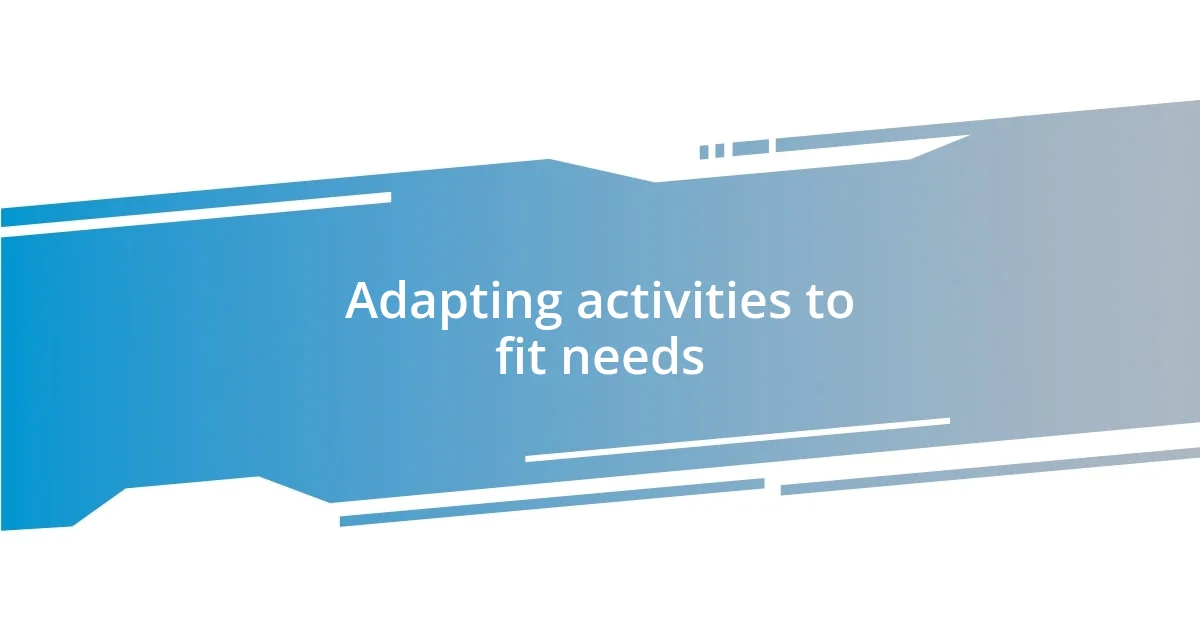
Adapting activities to fit needs
Adapting activities to fit needs
I’ve found that adapting activities to meet my child’s unique pace often involves a bit of trial and error. For example, when we first tried out painting, she was overwhelmed by the choice of colors and the materials available. I quickly noticed her frustration, so I simplified things by limiting the colors and providing her with a smoother brush. This little change made a world of difference; she was able to truly immerse herself in the process without feeling anxious. Have you ever felt the relief of witnessing your child finally enjoy an activity after making a simple adjustment?
Sometimes, I think back to our gardening project. Initially, I had a set plan that rushed us through planting the seeds in one afternoon. However, I soon realized that my daughter was captivated by each small detail—the texture of the soil, the way the seeds looked, and even the little bugs we encountered. We transitioned to a leisurely exploration, taking our time to observe the process of growth rather than rushing to complete a checklist. It was a wonderful lesson in patience that enhanced not just her learning, but our bonding experience too.
In retrospect, I learned that the key to adapting activities lies in observing her reactions and being flexible. I remember a moment during a storytime session where I switched from reading a book to creating a story together. The instant I asked her to help me decide what happened next, her face lit up. It was then my heart swelled with joy, realizing we had shifted from passive consumption to active creation. What do you think happens when children feel empowered in their activities? It opens up a world where their interests drive learning, and that’s when the magic unfolds.

